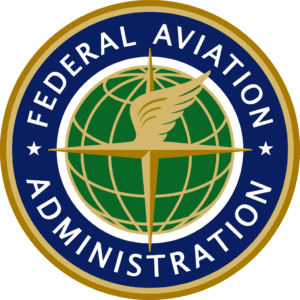Global Avionics Round-Up from Aircraft Value News (AVN)

Federal Aviation Administration logo.
The Trump administration’s approach to deregulation and economic policies is exerting deleterious effects on the aviation industry, including avionics. While reduced regulatory oversight may initially appear to benefit manufacturers, the long-term consequences, ranging from consumer demand fluctuations to greater safety concerns, are introducing new uncertainties.
Deregulation: Short-Term Gains, Long-Term Risks
The Trump regime’s rollback of aviation regulations has reduced compliance burdens for avionics manufacturers, making it easier to bring new products to market. That’s the good news. However, these short-term cost savings could backfire. Looser oversight increases the risk of subpar avionics systems entering service, potentially leading to safety issues that could undermine consumer confidence in the long run.
The administration’s trade war is dampening economic activity and consumer sentiment, which directly impacts air travel demand. Weaker travel demand means airlines are less likely to invest in fleet modernization, including avionics upgrades. If fewer passengers are flying, carriers have less incentive to prioritize state-of-the-art avionics systems that enhance efficiency, safety, and passenger experience.
Deregulation also is affecting labor markets and manufacturing supply chains. Relaxed labor laws may reduce costs for avionics companies in the short run, but a less stable workforce and the risk of skill shortages could hinder long-term industry growth. Disruptions in the global supply chain, exacerbated by the administration’s protectionist policies, are making it harder for avionics firms to source critical components at competitive prices.
Hamstringing the FAA
Cuts to the U.S. Federal Aviation Administration (FAA) are creating significant roadblocks for avionics development at a time when innovation is critical to the future of global aviation.
The FAA plays a key role in certifying new avionics technologies, ensuring they meet safety and performance standards before they reach the market. With fewer resources and personnel, the agency is struggling to process approvals in a timely manner, delaying the rollout of next-generation flight systems, including advanced autopilot functions, AI-driven diagnostics, and enhanced pilot-assist features.
The impact extends beyond certification delays. Reduced funding limits the FAA’s ability to collaborate with private-sector avionics firms, slowing research into cutting-edge technologies such as real-time aircraft health monitoring and cybersecurity measures to protect against electronic threats.
Workforce shortages within the agency mean that oversight of experimental programs, such as autonomous flight trials, is becoming inconsistent, creating uncertainty for manufacturers and investors alike.
These setbacks are particularly concerning as competitors in Europe and China continue advancing their avionics sectors with strong government support. If the FAA can’t keep pace, the U.S. risks losing its leadership in avionics innovation, potentially ceding market dominance to foreign manufacturers and jeopardizing national security interests tied to aerospace technology.
These trends significantly bolster the position of the Commercial Aircraft Corporation of China (COMAC), particularly as the ongoing U.S.-China trade war intensifies Beijing’s push for technological self-reliance.
With Western avionics suppliers increasingly subject to export restrictions and geopolitical scrutiny, China has accelerated efforts to develop domestic alternatives for critical cockpit systems. This has given rise to a burgeoning homegrown avionics sector that not only supports COMAC’s flagship C919 program but also insulates it from future supply chain disruptions.
As a result, COMAC stands to gain strategic advantages at the expense of Western aerospace giants, who risk losing market share and long-term influence in the world’s fastest-growing aviation market.
This article also appeared in our partner publication, Aircraft Value News.
John Persinos is the editor-in-chief of Aircraft Value News. You can reach John at: [email protected].